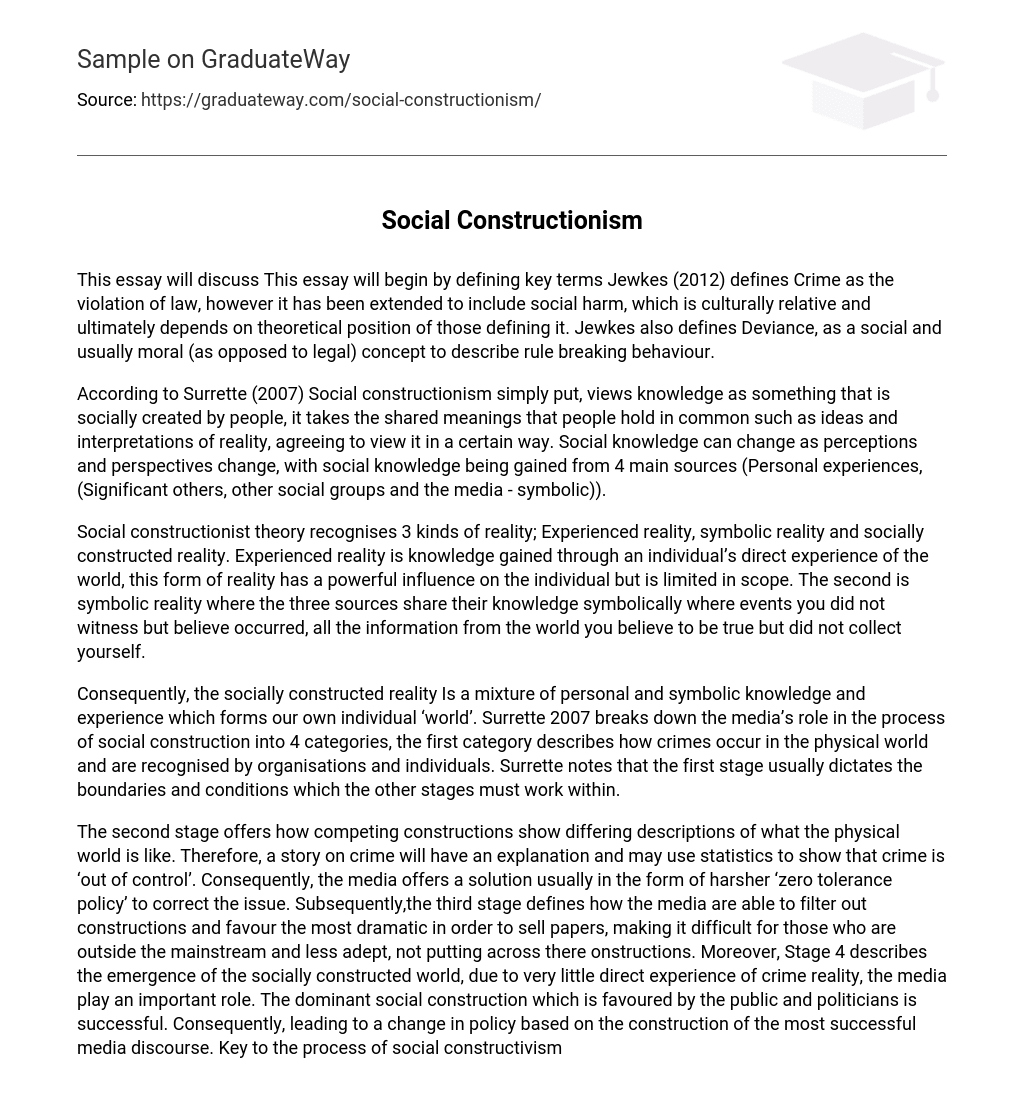This essay will discuss This essay will begin by defining key terms Jewkes (2012) defines Crime as the violation of law, however it has been extended to include social harm, which is culturally relative and ultimately depends on theoretical position of those defining it. Jewkes also defines Deviance, as a social and usually moral (as opposed to legal) concept to describe rule breaking behaviour.
According to Surrette (2007) Social constructionism simply put, views knowledge as something that is socially created by people, it takes the shared meanings that people hold in common such as ideas and interpretations of reality, agreeing to view it in a certain way. Social knowledge can change as perceptions and perspectives change, with social knowledge being gained from 4 main sources (Personal experiences, (Significant others, other social groups and the media – symbolic)).
Social constructionist theory recognises 3 kinds of reality; Experienced reality, symbolic reality and socially constructed reality. Experienced reality is knowledge gained through an individual’s direct experience of the world, this form of reality has a powerful influence on the individual but is limited in scope. The second is symbolic reality where the three sources share their knowledge symbolically where events you did not witness but believe occurred, all the information from the world you believe to be true but did not collect yourself.
Consequently, the socially constructed reality Is a mixture of personal and symbolic knowledge and experience which forms our own individual ‘world’. Surrette 2007 breaks down the media’s role in the process of social construction into 4 categories, the first category describes how crimes occur in the physical world and are recognised by organisations and individuals. Surrette notes that the first stage usually dictates the boundaries and conditions which the other stages must work within.
The second stage offers how competing constructions show differing descriptions of what the physical world is like. Therefore, a story on crime will have an explanation and may use statistics to show that crime is ‘out of control’. Consequently, the media offers a solution usually in the form of harsher ‘zero tolerance policy’ to correct the issue. Subsequently,the third stage defines how the media are able to filter out constructions and favour the most dramatic in order to sell papers, making it difficult for those who are outside the mainstream and less adept, not putting across there onstructions. Moreover, Stage 4 describes the emergence of the socially constructed world, due to very little direct experience of crime reality, the media play an important role. The dominant social construction which is favoured by the public and politicians is successful. Consequently, leading to a change in policy based on the construction of the most successful media discourse. Key to the process of social constructivism are the concepts involved in competition and how it works, which include, claims makers, factual claims and interpretive claims.
Moreover, Claims makers are the people and organisations with the ‘knowledge’ positing specific claims about social conditions. However, claims makers not only draw our attention but shape our view of what conditions mean and what the problem is. Furthermore, factual claims are statements which try and describe the world and are promoted as objective. In turn, interpretive claims are the statements which focus on the meanings of events they either offer an explanation why a factual claim exist, or they offer an action which need to be followed to correct the problem.





